When it comes to regulating blood sugar, we often hear that coming up with breakfast ideas is a challenge.
You may be wondering, if you’re sticking to a low carb diet plan, what kind of healthy breakfast should you be eating?
Or if you’re new to diabetes or prediabetes, you may be wondering if foods like whole-grain bread, whole-grain cereal or scrambled eggs make a good breakfast.
Below we’ll:
- Recap your diabetes management goals and breakfast comparisons
- Provide a list of diabetes friendly breakfast foods – the No & Yes options
- Inspire you with diabetic breakfast ideas and recipes
LISTEN TO THE PODCAST
CHAPTERS
1:29 Medication March Recap
2:58 Diabetes Management Goals Recap
3:42 Traditional Breakfast Nutrition Facts
5:15 Key Recommendation for Breakfast
7:29 Breakfast Foods To Avoid or Minimize
11:29 Breakfast Foods To Eat
15:42 Delicious Breakfast Meal Ideas
20:46 The Key To A Diabetes Friendly Breakfast

Your Diabetes Management Goals
Your number one goal with diabetes is getting down to a blood glucose that’s in a healthy range, and trying to keep it there.
Ideally, that is under 140 mg/dl (7.8 mmol/l) 2 hours after meals.
If you’re testing 2 hours after breakfast and your blood sugar levels are higher, you can definitely work on what you eat for breakfast, which will help you lower your levels.
Let’s compare two different breakfasts.
Breakfast #1
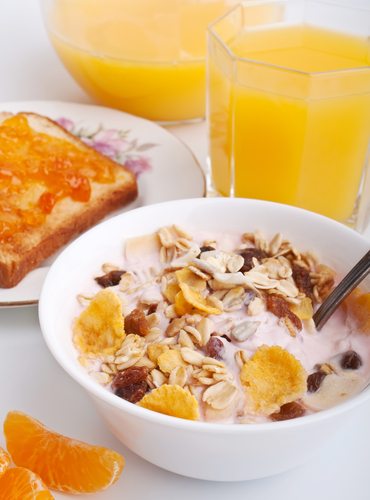
2 regular pieces whole grain toast (mostly carbs) – 25g carbs, 136 calories, 2.6g fiber
1 bowl (1 cup) whole wheat cereal (mostly carbs) – 25g carbs, 113 calories, 3.2g fiber
1 glass orange juice (all carbs) – 26g carbs, 112 calories, 0.5g fiber
Carbs: 76 grams
Calories: 361
Fiber: 6.3 grams
It sounds pretty crazy but not surprising that this is a commonly consumed breakfast – one that many people consider healthy.
However, with the above breakfast, you will likely find your blood sugar numbers 2 hours after a meal are high (over 140 mg/dl or 7.8 mmol/l) – and it is easy to see why. All those carbs!!
Remember, the nutrient that influences your blood sugar levels the most is carbohydrates. So the solution is to cut down on the carbs to get a better after-meal reading.
Breakfast #2
Mixed veggie egg scramble (recipe below) – 11g carbs, 249 calories, 4g fiber
…with 1/2 avocado, diced – 8.5g carbs, 160g calories, 7g fiber
…and 1/2 tomato, diced – 2.5g carbs, 11 calories, 0.75g fiber
Carbs: 22 grams
Calories: 420
Fiber: 11.75 grams
With this breakfast menu you will be consuming far less carbs, which will be much better for your blood sugar levels.
You will still be consuming substantial calories, the difference however, is the calories are all in the form of nutrient-dense ingredients that will provide you with more vitamins and minerals – that means better health and better blood sugar.
Plus, you’ll be eating almost twice as much fiber – that’s a win-win for blood sugar!
You’ve probably heard that fiber is good for blood sugar and that certainly is true. But there is a common misconception that whole wheat or whole grain foods are high in fiber. Sure, they are higher in fiber than most ‘white’ foods. But, natural whole foods are often much higher in fiber (and better for blood sugar!).
So, now that we’re starting to open your mind about thinking differently about breakfast (with your goals in mind), let’s look closer at some ‘No & Yes’ breakfast foods.
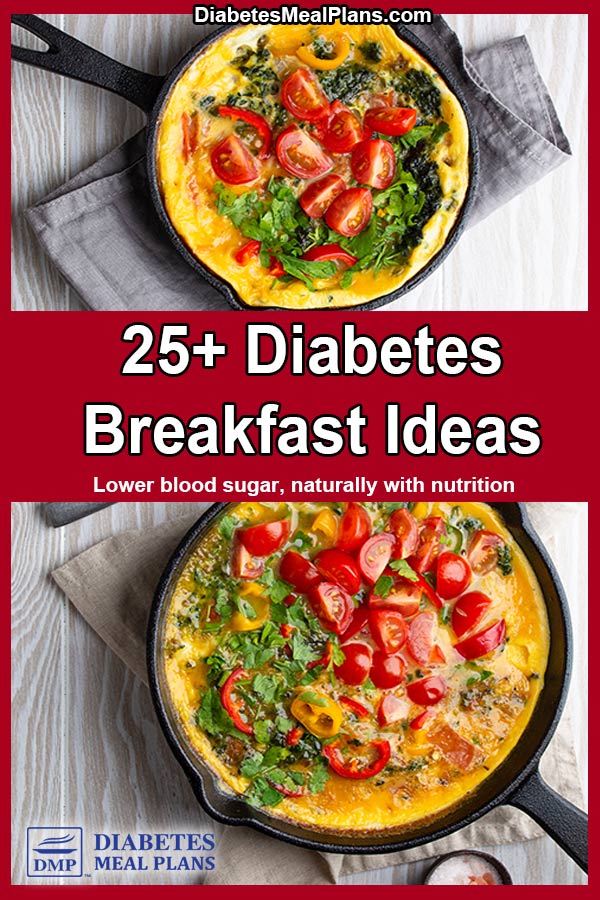
Common Breakfast Foods Nutrition Facts
NO/MAYBE BREAKFAST FOODS
If you choose to eat the following items, make sure you eat small portions and monitor your blood sugar levels closely to evaluate how they affect you.
Oats: are often recommended as a healthy breakfast food. After all, they contain protein and fiber that’s meant to help lower cholesterol levels, right?
Well, yes, oats do contain fiber and protein. But… they mostly contain carbohydrates.
While some people can tolerate eating oats in the form of oatmeal or porridge, most people do better without oats. And most people are surprised that cutting out oats gets them lower blood sugar numbers.
Steel cut oats are really no different. Oats are oats and contain high amounts of carbs.
Things like cream of wheat and grits are also higher in carbs, so need to be avoided, or at least minimized for best blood sugar results.
Whole wheat products: whether it’s bread or cereals, whole wheat products are mostly carbs. And they are generally high in carbs, too.
For instance, one slice of whole wheat bread contains around 13 grams of carbs and one small bowl of whole wheat cereal contains around 25 grams of carbs.
Fruit juice: is a no no. When you juice fruit you are basically injecting your bloodstream with a fast fix of sugar, and that only leads to one thing – blood sugar spikes you don’t need!
Breakfast cereal: can really get you into trouble. Majority of options that line the supermarket shelf are jam-packed with carbs and “added” sugars. Not much going on there in terms of valuable nutrition.
Breads, bagels, donuts etc: flour-based foods are also very high in carbs and high in glycemic index too. That means when you eat them, your levels will most likely go up, if not skyrocket in some cases.
One of the most effective ways to lower blood sugar levels is to – cut out bread, pasta, potatoes, rice and flour-based foods.
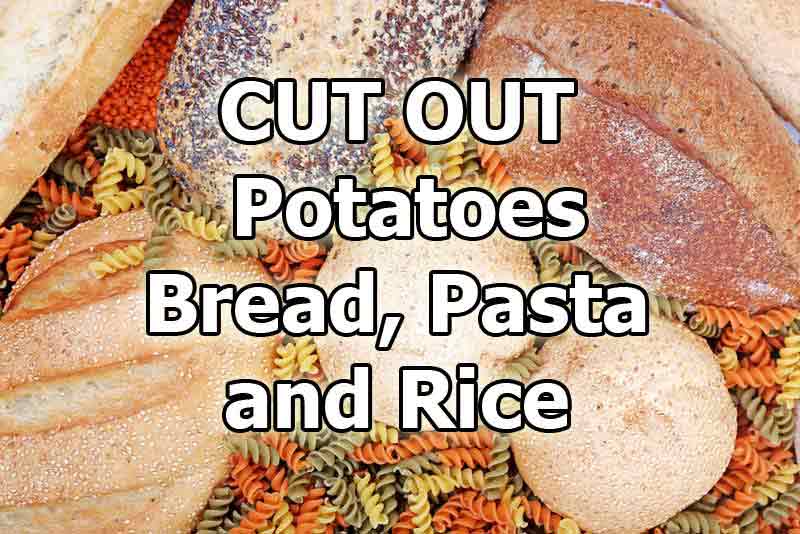
YES BREAKFAST FOODS
Dairy products: cream cheese, cottage cheese and regular cheeses like cheddar or mozzarella make an awesome breakfast addition. These are all low in carbs and higher in protein and fats – all of which helps stabilize blood sugar.
Milk and plain Greek yogurt are fine too, but don’t overdo it. These are a little higher in carbs compared to cheeses. In terms of milk, you can choose either full cream or skim milk. Same goes for yogurt. Just stick to the plain yogurt options, as many others are loaded with sugars, flavors and preservatives.
Eggs: Now before you ask the question most people do (won’t eating eggs raise my cholesterol and lead to heart disease). The answer is, no, eating eggs does not cause heart disease, and that includes eating the yolks.
You don’t have to stick to eating egg whites because the yolks contain valuable nutrition such as vitamin D and choline, and they are not bad for cholesterol or heart health.
In fact, research shows the opposite – eating eggs everyday can improve your cholesterol and heart health, even when you have type 2 diabetes or prediabetes.
For breakfast, you can include:
- Hard boiled eggs
- Scrambled eggs
- Poached eggs
- Fried eggs
Or make any egg dish of your choosing.
Try this Mixed Veggie Egg Scramble.
Fresh fruit or frozen fruit: adding a bit of sweetness to your breakfast can make it more pleasurable, but only if you choose the right fruit – mainly berries.
You can safely eat:
- Strawberries
- Blueberries
- Raspberries
- Blackberries
- Fresh cranberries
- Lemon
- Lime
- Grapefruit
Bacon: in moderation bacon or turkey bacon is fine. It is a low carb food that won’t influence blood sugar. Just remember though, bacon is a processed meat so it’s not ideal as an everyday food.
Vegetables: we always encourage people to include vegetables at every meal, including breakfast.
Vegetables are high fiber and provide vitamins and minerals that your body needs.
While it may seem strange or unappetizing to eat veggies (at first), they can be included in many ways. And you’ll soon be surprised how much you enjoy them!
For instance:
- Add veggies to a breakfast scramble or casserole
- Make a veggie filled omelet topped with cheese
- Pack veggies into egg muffins
- Eat leftovers for dinner – a soup, stew or stir fry
Nuts & seeds: are high in fiber, protein and healthy fats that can help sustain your energy all through the morning.
Make a blood sugar-friendly muesli with nuts and seeds. You can also make muffins, cakes and bakes with nut flours such as almond flour or flaxseed meal.
And, you can include nut butters such as peanut butter and almond butter – dip your celery or carrot sticks. Or place some nut butter in a smoothie for added thickness, protein and flavor.
Top Tip For Stable Blood Sugar
The key to a diabetes friendly breakfast is to base it around a protein-rich foundation, to keep those carbs low and to choose quality nutrient dense fresh foods. This combination is going to help keep your blood sugar stable not just after breakfast, but throughout the day!
Base your protein-rich breakfast foundation around eggs (including the yolks), bacon and sausage (in moderation), meats (like beef, chicken, turkey), tofu or tempeh, dairy products like cheese, milk and plain high protein Greek yogurt, nuts and seeds and protein powders.
Research shows us that getting sufficient protein at breakfast improves glucose variability, keeping glucose more leveled out throughout the day. Protein helps to satisfy our appetite and reduce hunger. Protein has a much smaller impact on glucose and insulin, compared with higher carb breakfasts. Protein helps us maintain muscle tissue as we age, which is important for metabolic function. Protein helps support more efficient weight loss or maintenance. And protein helps support the body’s hormonal responses and cellular function.
Protein-rich options include:
- Eggs offer high-quality protein, essential nutrients like vitamin D and choline, without harming cholesterol levels.
- Processed meats like bacon and sausage are options but should be eaten in moderation due to being lower-quality proteins.
- Beef, chicken, turkey or tofu can be unconventional yet protein-rich breakfast choices.
- Dairy products including cream cheese, cottage cheese, and other cheeses are low-carb, high in protein and fats.
- Milk and plain Greek yogurt provide protein; opt for full cream or skim milk and avoid sugary yogurts.
- Nuts & seeds are excellent for fiber, protein, and healthy fats.
- Protein powders (whey or plant-based) can be incorporated into various breakfast meals.
KEY POINT: You need to focus on building a protein-rich breakfast, and the breakfast meal ideas provided below can help you do that!

Diabetic Breakfast Ideas
Egg Based Breakfasts
- Omelets
- Filled with veggies, chicken, cottage cheese, bacon, tomato
- Scrambled eggs
- Poached eggs
- Hard boiled eggs
- topped with cottage cheese
- Egg Muffins
- Filled with mushrooms and cheese
- Spinach and tomato
- Soft boiled eggs
- Use chicken strips or steamed asparagus for yolk dipping
- Veggie egg slice
- Frittatas
- Crustless quiche
Try these Spinach & Tomato Egg Muffins
Non-Egg Based Breakfasts
- Pancakes – made with almond or coconut flour
- Berry muffins
- Cereals made with nuts, seeds, coconut, and topped with berries
- Smoothies such as a Mixed Berry Smoothie or coffee
- Cottage cheese with berries and nuts
- Oatmeal made with chia seeds, almond flour and protein powder
- Baked beans made with green beans, bell pepper and tomatoes
- Breakfast burrito wrapped in lettuce instead of bread
- Soup – any type makes a great breakfast
- Leftovers – you don’t have to eat ‘breakfast’ foods for breakfast, after all, it is just another meal!
- Yogurt, nuts and berries
- Muesli made with nuts and seeds
- Low carb breads – make breads at home or purchase low carb breads online – top with your favorite toppings or as a cheese melt, toast or sandwich
Try this Bircher Muesli
Conclusion
Breakfast can be normal with diabetes, just a new normal. A normal that doesn’t include many of the traditional breakfast foods – because they are high in carbs and the more carbs you eat, the higher your blood sugar levels are likely to be.
That doesn’t mean going carb free. Vegetables also provide carbohydrates – the type of carbs and plenty of fiber that supports optimal blood sugar control.
With that list of diabetic breakfast ideas above, you can see that you won’t feel deprived and really won’t get bored – you’ll just be enjoying different foods.
Even without tradition types of cereal and toast, there are still tons of things you can eat!
References
-
-
Oliveira et al. Impact of a Low-Carbohydrate Compared with Low-Fat Breakfast on Blood Glucose Control in Type 2 Diabetes: A Randomized Trial. 2023. https://www.sciencedirect.com/science/article/abs/pii/S0002916523488909?via%3Dihub
-
-
- Protein Requirements by Age: A Complete Guide. https://www.strengthlog.com/protein-requirements-by-age/
- Stentz FB, Mikhael A, Kineish O, Christman J, Sands C. High protein diet leads to prediabetes remission and positive changes in incretins and cardiovascular risk factors. Nutr Metab Cardiovasc Dis. 2021 Apr 9;31(4):1227-1237. doi: 10.1016/j.numecd.2020.11.027. Epub 2020 Dec 8. PMID: 33549435.
-
-
Big breakfast rich in protein and fat improves glycemic control in type diabetics. https://onlinelibrary.wiley.com/doi/10.1002/oby.20654
-

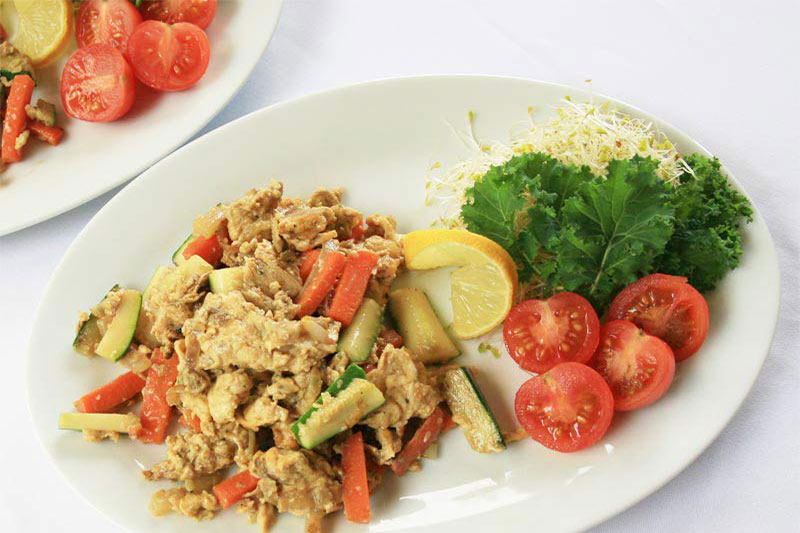
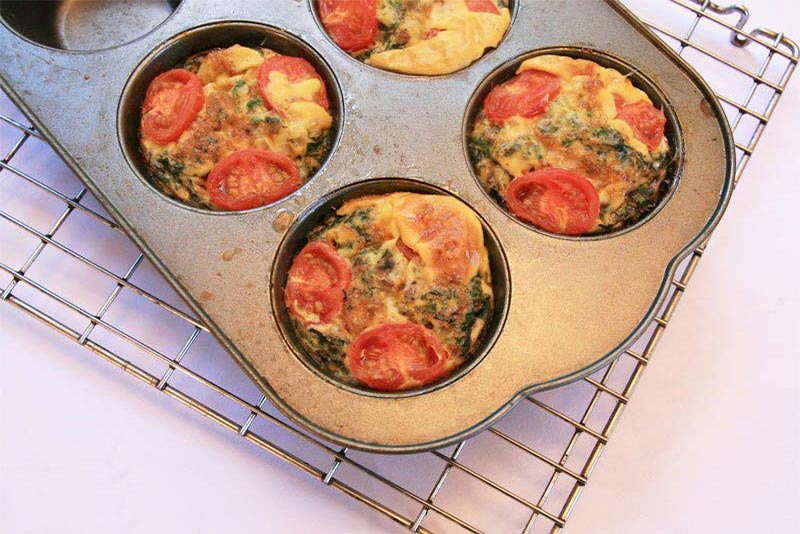
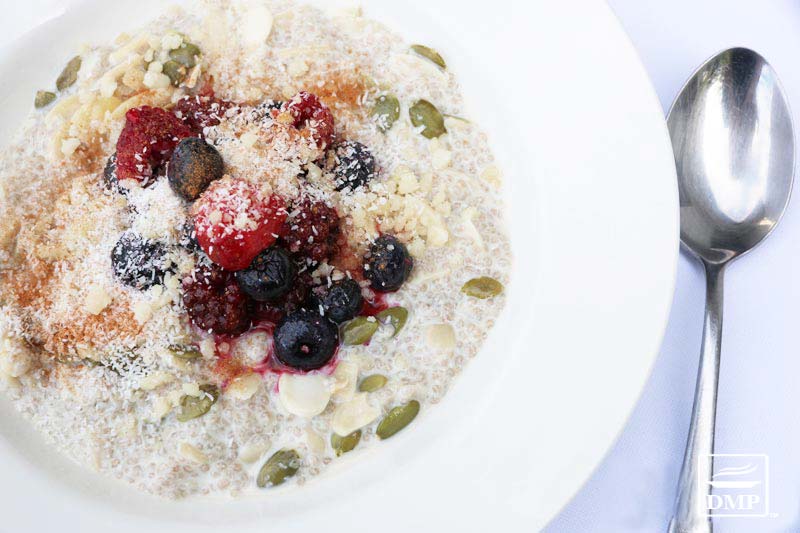
You recommend to cut out bread sugar rice pasta etc. Agreed, but I do eat for breakfast Haferflocken boiled with a touch of milk garnished in a drop of honey. Made more exciting by adding various nuts, various fresh fruits and various berries in season. And I love it!!
I have no idea what it does to my type 2 but keeps my BP well under control. My kidneys are somewhat problematic but not too bad.
What would you say about my approach, I am keen to learn.
Hi Dipak, Rolled oats are high in carbohydrates, and topped with milk, honey and fruits also adds more sugar/carbs, so it’s not exactly the best breakfast in terms of blood sugar control. If you use a glucose monitor you can test this for yourself. Consider using some of the breakfast ideas here and try to have breakfast variety.
Previously, I had some egg bites from a well-known place, which had spinach and mushrooms in them.
I tried the egg muffin recipe and used spinach, mushrooms and cheese.
They turned out pretty good! I’m looking forward to eating them this week.
So yummy!
This is so incredibly helpful – thanks!
My doc put me on a plant based diet d/t high cholesterol. I’m having a very difficult time coming up with a menu that keeps me satiated. My blood sugars are high b/c I can’t find many dishes I can eat with diabetes and high cholesterol. Any suggestions?
Perhaps you may consider a lower carb diet instead, since plant based diets tend to be high in carbs and less satiating. We encourage a high vegetable intake although we are not solely plant. Our members achieve lower blood sugar and improvements in cholesterol as well. If you want to maintain plant-based eating, you will get better results limiting your foods to this list.
I’m challenged eating a plant based eating plan, which my endocrinologist fully supports. So many recipes for breakfast are eggs and dairy. In the future will you have more plant based suggestions/recipes to expand what I am eating and help keep my numbers lower?
Many thanks!
You can see non-egg-based breakfast ideas among the suggestions here Laurie. As for more plant based suggestions, there’s no guarantee there. We encourage a high vegetable intake although we are not solely plant-based, therefore, we usually offer variety.
Really nice post. Thanks for sharing.
Since being diagnosed with type II I have tried 2 Banquet Turkey Sausages with 1/2 Everything (Thomas’) thin bagel. This is about 13 carbs. What is the target total of carbs per meal… per day?
Most people find the sweet spot between 50-80 grams of carbs per meal! This would equate to 15g per meal, plus room for a few 5-15g carb snacks. Some of our members have great success consuming a little higher carb amount – around 120g per day. And, yet there are some who prefer a lower intake around 20g per day. Ultimately it’s whatever value gives you the best control and is sustainable long term. Caution with the thin bagels that although they may be lower in carbs than other sandwich breads, they are still a processed food so I would recommend saving them for special occasions rather than an every day food.
Is Carbonaut bread any good. It’s got 1-2 net carbs per slice. I take 1/4 cup Bob’s Red Mill old fashioned rolled oats for overnight oats and 1/2 cup of almond milk with 2 tblsp of plain Greek yogurt with 1 cup of fresh berries and 1/2 cup of nuts. I have this 3 times a week.
Rather than focusing on the net carbs, I’d recommend reviewing the total carbs per slice. For bread, if it’s around 8-10g/slice then it may be okay to consume 1 slice, however you need to monitor your sugar levels to see how your individual body responds. Same with the overnight oats, oatmeal can be very problematic for many, so the best advice is to check your sugar levels ~2hrs after consuming the overnight oats. In both these examples, adding some protein such as eggs or leftover chicken can also help mitigate blood sugar spikes and “balance” the carbs.
Are sprouted bread products such as Ezekiel or Angelic brands good or not.
These types of sprouted breads often get promoted as healthy, but it’s important to look at the total carbohydrate content first and foremost. In general these products are still relatively high in carbs – especially if having multiple slices. So, while the nutrient quality is better than traditional wheat bread, for best blood sugar control we recommend eliminating sprouted breads as well.
I had an orange with my almond flour scone as an experiment. You were right! Oranges are off my list for now. After 2 hour Blood Sugar reading was 172. I’ll be curious to see if eaten at lunch with a bunch of vegggies and protein it still makes such a leap. We will see.
Yeah! FBS 117 this morning! I had an orange with my almond flour scone as an experiment. You were right! Oranges are off my list for now. After 2 hour Blood Sugar reading was 172. I’ll be curious to see if eaten at lunch with a bunch of vegggies and protein it still makes such a leap. We will see.
Yeah! And good observations there Sherry – glad you’re implementing and seeing the effects of various foods. Thanks for checking in!